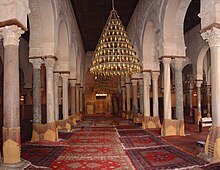Hall
– **History:**
– Houses in warmer climates often had courtyards, while in northern areas, manors were built around a great hall.
– The hall served as a central space for eating, working, and sleeping in medieval times.
– The term “hall” is commonly used to refer to country houses and manor houses.
– In later medieval Europe, the main room of a castle or manor house was the great hall.
– The hall’s functions evolved over time as technology improved and privacy became more valued.
– **Other uses:**
– Many colleges and universities have buildings titled as halls, often named after donors or respected individuals.
– In Oxford and Cambridge, the term “hall” is used for the dining hall for students.
– The medieval collegiate dining hall is a modified form of the Great hall.
– Halls were originally where university members lived together during term time.
– Some institutions are titled Hall instead of College due to historical reasons.
– **Collegiate halls:**
– Many institutions at colleges and universities are formally titled as halls.
– The term “hall” is used for the dining hall for students at Oxford and Cambridge.
– Formal Hall requires wearing gowns for dinner during the evening.
– The collegiate dining hall is a modified form of the Great hall.
– Some halls were not recognized as colleges at their foundation.
– **Meeting hall:**
– A hall is a building rented out for meetings and social events.
– It can be privately or government-owned and used for various gatherings.
– Examples include function halls for weddings and community halls for rent.
– The hall is a principal room in a building used for meetings and affairs.
– Social affairs and meetings are commonly held in halls.
– **Religious halls:**
– In religious architecture, the prayer hall is a dedicated space for worship.
– Many churches have associated halls for meetings and events.
– A hall church is characterized by a nave and side aisles of equal height.
– The prayer hall of the Great Mosque of Kairouan is an example.
– The prayer hall is a significant space in Islamic architecture.
In architecture, a hall is a relatively large space enclosed by a roof and walls. In the Iron Age and early Middle Ages in northern Europe, a mead hall was where a lord and his retainers ate and also slept. Later in the Middle Ages, the great hall was the largest room in castles and large houses, and where the servants usually slept. As more complex house plans developed, the hall remained a large room for dancing and large feasts, often still with servants sleeping there. It was usually immediately inside the main door. In modern British houses, an entrance hall next to the front door remains an indispensable feature, even if it is essentially merely a corridor.

Today, the (entrance) hall of a house is the space next to the front door or vestibule leading to the rooms directly and/or indirectly. Where the hall inside the front door of a house is elongated, it may be called a passage, corridor (from Spanish corredor used in El Escorial and 100 years later in Castle Howard), or hallway.
